Librarian for African American and African Studies Katrina Spencer presents film and book pairings from the UVA catalog and beyond in celebration of Black History Month 2023. Spencer takes a wide, diasporic view, highlighting actors, writers, and creators from the United States, Brazil, South Africa, and Guyana. You are warmly encouraged to explore additional films through our streaming film holdings on Kanopy, Projectr, and our resource guide managed by Media Collections Librarian Leigh Rockey. For more recommendations, also see our posts commemorating Black History Month 2022 and Black History Month 2021.
An incredibly vibrant and richly colored four-part documentary found on Netflix, “High on the Hog: How 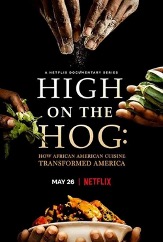 African American Cuisine Transformed America” traces the connections and foodways of the transatlantic Black diaspora. “High on the hog” is an idiomatic phrase that refers to a luxurious lifestyle and the series shows the ways in which multiple generations of Black peoples created delicacy and sophisticated cuisine in the midst of bounty on the West African coastlines and scarcity in times of forced servitude and political oppression. Hosted by Stephen Satterfield and inspired by food historian Jessica B. Harris’ life’s work, the series starts in Benin with food staples such as okra, yams, and peanuts. It visits South Carolina and its unique cultivation of rice. It arrives in Charlottesville and highlights the French-trained enslaved chef, James Hemings, of Thomas Jefferson’s of Monticello. (This episode also features public historian and UVA alumna Niya Bates.) The series then peers at oyster shucking up north in New York. Barbecue, cookouts, and Black cowboys also make appearances. The work is a worthwhile watch for its stimulating visuals alone, but the history lessons are sure to enlighten as well. “High on the Hog” proves that Black history is American history.
African American Cuisine Transformed America” traces the connections and foodways of the transatlantic Black diaspora. “High on the hog” is an idiomatic phrase that refers to a luxurious lifestyle and the series shows the ways in which multiple generations of Black peoples created delicacy and sophisticated cuisine in the midst of bounty on the West African coastlines and scarcity in times of forced servitude and political oppression. Hosted by Stephen Satterfield and inspired by food historian Jessica B. Harris’ life’s work, the series starts in Benin with food staples such as okra, yams, and peanuts. It visits South Carolina and its unique cultivation of rice. It arrives in Charlottesville and highlights the French-trained enslaved chef, James Hemings, of Thomas Jefferson’s of Monticello. (This episode also features public historian and UVA alumna Niya Bates.) The series then peers at oyster shucking up north in New York. Barbecue, cookouts, and Black cowboys also make appearances. The work is a worthwhile watch for its stimulating visuals alone, but the history lessons are sure to enlighten as well. “High on the Hog” proves that Black history is American history.
I’d readily pair Satterfield’s work with “Black Food: Stories, Art, & Recipes From Across the African 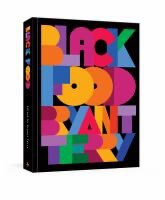 Diaspora.” Critics can’t seem to say enough good things about “Black Food,” a colorful anthology of food histories, memoirs, and recipes collected by food savant, author, and publisher Bryant Terry. With more than three dozen recipes — sweet, savory, pungent, spicy, and the like — the anthology delivers a cascade of mesmerizing flavors including something for every palate. For a classic soul food dish, see “Collards” on page 157. For an innovative dish, see the “Black Eyed Pea & Charred Octopus Salad” on page 163. Anyone will tell you that “Black Food” is much more than a cookbook. Terry’s vision is one of color, breadth, and inclusion, and he welcomes a broad swath of voices, among them author Toni Morrison’s, rest advocate Tricia Hersey’s, and peer chef Pierre Thiam’s to comment on their experiences and histories in creating nourishment for the body and soul. Among the many accomplishments of this work is the fact that more than half of the recipes included are either vegetarian or vegan — not a simple undertaking in a society that collectively practices mass meat consumption. Perhaps the lone frustration associated with this tome is not being able to move through the many culinary challenges quickly enough!
Diaspora.” Critics can’t seem to say enough good things about “Black Food,” a colorful anthology of food histories, memoirs, and recipes collected by food savant, author, and publisher Bryant Terry. With more than three dozen recipes — sweet, savory, pungent, spicy, and the like — the anthology delivers a cascade of mesmerizing flavors including something for every palate. For a classic soul food dish, see “Collards” on page 157. For an innovative dish, see the “Black Eyed Pea & Charred Octopus Salad” on page 163. Anyone will tell you that “Black Food” is much more than a cookbook. Terry’s vision is one of color, breadth, and inclusion, and he welcomes a broad swath of voices, among them author Toni Morrison’s, rest advocate Tricia Hersey’s, and peer chef Pierre Thiam’s to comment on their experiences and histories in creating nourishment for the body and soul. Among the many accomplishments of this work is the fact that more than half of the recipes included are either vegetarian or vegan — not a simple undertaking in a society that collectively practices mass meat consumption. Perhaps the lone frustration associated with this tome is not being able to move through the many culinary challenges quickly enough!
***
“Wash Day Diaries,” a graphic novel and quick read by Jamila Rowser and Robyn Smith, tells the stories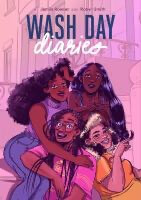 of four fictional but hyper realistic young Black women — Nisha, Kim, Cookie, and Davene — in New York City and the adventures they encounter attempting to live their best lives. As they move about the metropolitan space, they are faced with misogyny, intergenerational trauma, romantic “situationships,” and depression. Through it all, they care for each other— and their hair— showing a commitment to sisterhood and locks that slay. Again, the colors of this work, as in those listed above, are an endless feast for the eyes. Many readers will find themselves reflected on the pages, be it in the familiar toxicity of many a modern dating plain, the stifling expectations of familial elders, or the doldrums of managing one’s mental health. The thread of hair care is a recognizable cultural practice for Black women that allows the quartet of characters to show one tradition they share, and acts as an authoritative but unobtrusive driver for the narrative. Ultimately, the story is one of triumph against adversity via reliance on community bonds.
of four fictional but hyper realistic young Black women — Nisha, Kim, Cookie, and Davene — in New York City and the adventures they encounter attempting to live their best lives. As they move about the metropolitan space, they are faced with misogyny, intergenerational trauma, romantic “situationships,” and depression. Through it all, they care for each other— and their hair— showing a commitment to sisterhood and locks that slay. Again, the colors of this work, as in those listed above, are an endless feast for the eyes. Many readers will find themselves reflected on the pages, be it in the familiar toxicity of many a modern dating plain, the stifling expectations of familial elders, or the doldrums of managing one’s mental health. The thread of hair care is a recognizable cultural practice for Black women that allows the quartet of characters to show one tradition they share, and acts as an authoritative but unobtrusive driver for the narrative. Ultimately, the story is one of triumph against adversity via reliance on community bonds.
Rowser and Smith’s work belongs in conversation with Chris Rock’s 2009 documentary “Good Hair,” 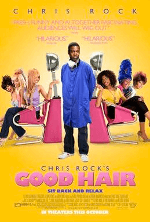 which prioritizes revealing not only the many dollars Black women put towards maintaining our hair, but the sacrifices and risks we take, too, with the same goal in mind. The term “good hair” within international Black communities refers to the adherence to a European beauty standard that suggests that kinky or curly hair is less beautiful and/or desirable than straight hair. This belief thrust upon the Black diaspora for centuries led to the straightening of our hair with hot combs, flat irons, and chemical relaxers, and the use of some wigs. The last 15 years have shown tremendous growth within the natural hair movement and made braids, twist outs, cornrows, and other natural styles more widespread than before. “Good Hair” largely examines the economics behind Black hair care, and while the tradition has seen a major shift since this film’s release, the documentary gives a great overview of a multibillion-dollar industry and the paramount practices of a long era.
which prioritizes revealing not only the many dollars Black women put towards maintaining our hair, but the sacrifices and risks we take, too, with the same goal in mind. The term “good hair” within international Black communities refers to the adherence to a European beauty standard that suggests that kinky or curly hair is less beautiful and/or desirable than straight hair. This belief thrust upon the Black diaspora for centuries led to the straightening of our hair with hot combs, flat irons, and chemical relaxers, and the use of some wigs. The last 15 years have shown tremendous growth within the natural hair movement and made braids, twist outs, cornrows, and other natural styles more widespread than before. “Good Hair” largely examines the economics behind Black hair care, and while the tradition has seen a major shift since this film’s release, the documentary gives a great overview of a multibillion-dollar industry and the paramount practices of a long era.
***
“Honk for Jesus. Save Your Soul,” directed by Adamma Ebo, was the best film I saw in 2022 — not that I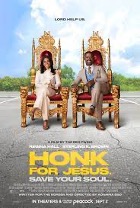 saw all that many. The pandemic, after all, changed our collective movie-going behavior for a few years. I’d call this one a satirical work that critiques commitment to the prosperity gospel narrative and any habit of sweeping scandal under the rug. A pastor named Lee-Curtis Childs and his wife Trinitie have a fall from grace in leading their church flock. The two hire a documentarian and camera crew to follow their rebirth and phoenix-like rise from the ashes. The film should have an even greater following, not only for its execution, but also for its high-profile leads, Regina Hall and Sterling K. Brown.
saw all that many. The pandemic, after all, changed our collective movie-going behavior for a few years. I’d call this one a satirical work that critiques commitment to the prosperity gospel narrative and any habit of sweeping scandal under the rug. A pastor named Lee-Curtis Childs and his wife Trinitie have a fall from grace in leading their church flock. The two hire a documentarian and camera crew to follow their rebirth and phoenix-like rise from the ashes. The film should have an even greater following, not only for its execution, but also for its high-profile leads, Regina Hall and Sterling K. Brown.
For those of us who grew up in the church, the film has an uncanny knack for shedding  light on the places where the practice of faith can splinter. How much commitment should we give to organized religion when that same commitment is causing us pain? That question is the one that led me to pair “Honk for Jesus” with the short story collection “The Secret Lives of Church Ladies” by Deesha Philyaw. If any viewer or reader has been hurt by engagement with organized religion, these two works will help them foreground and explore some foundational frictions. Both works ask, “What happens when the prescribed path to salvation isn’t working? How much are we willing to cover up, repress, and ignore to be called holy, faithful, and sanctified?”
light on the places where the practice of faith can splinter. How much commitment should we give to organized religion when that same commitment is causing us pain? That question is the one that led me to pair “Honk for Jesus” with the short story collection “The Secret Lives of Church Ladies” by Deesha Philyaw. If any viewer or reader has been hurt by engagement with organized religion, these two works will help them foreground and explore some foundational frictions. Both works ask, “What happens when the prescribed path to salvation isn’t working? How much are we willing to cover up, repress, and ignore to be called holy, faithful, and sanctified?”
***
I was taking a Brazilian Portuguese class once a week with the local Speak! Language Center and my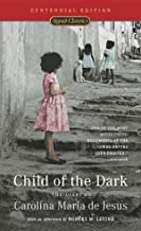 instructor told me about a memoir called “O quarto de despejo”/ “Child Of The Dark: The Diary Of Carolina Maria de Jesus,” translated by David St. Clair. Author Carolina Maria de Jesus, a Black Brazilian woman, lived in a community formerly known as a “favela” or slum in São Paulo, Brazil, in the mid- and late-1950s. Unlike many of her neighbors, she was able to read and write. And unlike many women in her community, she was unmarried by choice. De Jesus’ diary tells of daily life in an intimate community of impoverished people who are lacking basic amenities like indoor plumbing. These are people who know hunger and people who scrape by as “catadores,” workers who exchange discarded recyclable materials for money. After de Jesus’ work was “discovered” by a journalist, the book that followed would become an international success and de Jesus would be able to liberate herself from the slum.
instructor told me about a memoir called “O quarto de despejo”/ “Child Of The Dark: The Diary Of Carolina Maria de Jesus,” translated by David St. Clair. Author Carolina Maria de Jesus, a Black Brazilian woman, lived in a community formerly known as a “favela” or slum in São Paulo, Brazil, in the mid- and late-1950s. Unlike many of her neighbors, she was able to read and write. And unlike many women in her community, she was unmarried by choice. De Jesus’ diary tells of daily life in an intimate community of impoverished people who are lacking basic amenities like indoor plumbing. These are people who know hunger and people who scrape by as “catadores,” workers who exchange discarded recyclable materials for money. After de Jesus’ work was “discovered” by a journalist, the book that followed would become an international success and de Jesus would be able to liberate herself from the slum.
Before reading the work above, I decided to watch the documentary “Waste Land,” directed by Lucy  Walker, on Amazon Prime to learn more about the lives of catadores. In this film, viewers are transported to an active and dangerous landfill where Brazilians rifle through garbage in an effort to make a living. Brazilian artist Vik Muniz invites several catadores to participate in an unconventional project in which he recreated their portraits using the very materials reaped from the landfill. His avant-garde approach to bringing humanity to the workers is enough to merit the viewing of this film. Witnessing the growth of the participants’ self-esteem upon seeing themselves in a new light, however, is the true prize. Muniz’ auctioning of his artistic work brings greater funds and dignity to the marginalized workers, changing their outlooks forever.
Walker, on Amazon Prime to learn more about the lives of catadores. In this film, viewers are transported to an active and dangerous landfill where Brazilians rifle through garbage in an effort to make a living. Brazilian artist Vik Muniz invites several catadores to participate in an unconventional project in which he recreated their portraits using the very materials reaped from the landfill. His avant-garde approach to bringing humanity to the workers is enough to merit the viewing of this film. Witnessing the growth of the participants’ self-esteem upon seeing themselves in a new light, however, is the true prize. Muniz’ auctioning of his artistic work brings greater funds and dignity to the marginalized workers, changing their outlooks forever.
***
Styling my hair into single-strand twists, strands and fingertips covered in coconut oil and raw shea butter, takes a while. So I turn on something I can watch to get ’er done. In December, Netflix recommended Trevor Noah’s stand up special “I Wish You Would” to me as a 99% match, so I opted in. I’ve only seen clips of Noah’s late-night hosting of “The Daily Show” via YouTube, but one of the things I consistently appreciate is his intimate knowledge of three different continents: Africa, Europe, and North America. While fellow Afro-British comedian Gina Yashere shares some of this vantage point, too, this profile isn’t so common in the world of comedy, so there’s always something to learn from his humor. In this special, the commentary Noah makes about the international handling of the coronavirus pandemic was especially compelling. For centuries, the media has depicted African cultures as backward and lacking. Despite this representation, Noah points out that several African nations took the knowledge they had gained from preventing the spread of the Ebola virus and applied it, yielding winning results and challenging the notion of superior health practices being broadly prevalent only outside of Africa. Over the past seven years, this creator’s incisive wit has helped Western viewers expand their views of Africa and Africans, demonstrating that intelligence, wit, sarcasm, and social critique are alive and well in the Global South, too.
takes a while. So I turn on something I can watch to get ’er done. In December, Netflix recommended Trevor Noah’s stand up special “I Wish You Would” to me as a 99% match, so I opted in. I’ve only seen clips of Noah’s late-night hosting of “The Daily Show” via YouTube, but one of the things I consistently appreciate is his intimate knowledge of three different continents: Africa, Europe, and North America. While fellow Afro-British comedian Gina Yashere shares some of this vantage point, too, this profile isn’t so common in the world of comedy, so there’s always something to learn from his humor. In this special, the commentary Noah makes about the international handling of the coronavirus pandemic was especially compelling. For centuries, the media has depicted African cultures as backward and lacking. Despite this representation, Noah points out that several African nations took the knowledge they had gained from preventing the spread of the Ebola virus and applied it, yielding winning results and challenging the notion of superior health practices being broadly prevalent only outside of Africa. Over the past seven years, this creator’s incisive wit has helped Western viewers expand their views of Africa and Africans, demonstrating that intelligence, wit, sarcasm, and social critique are alive and well in the Global South, too.
Another creator who labored in an effort to shed light on the interactions between continents was  Guyanese historian Walter Rodney, author of the earth-shattering work “How Europe Underdeveloped Africa.” Rodney’s work highlights a historical phenomenon of Europe treating Africa as a source for endless extraction, which has long crippled African economies and labor forces, while building, expanding, and sustaining European ones. Anyone getting their feet wet in the history of Africa will be helped by learning about the Berlin Conference of 1884-1885 and Rodney’s work, which includes an examination of the historic event and contextualizes enduring disparities we see amongst major global entities today.
Guyanese historian Walter Rodney, author of the earth-shattering work “How Europe Underdeveloped Africa.” Rodney’s work highlights a historical phenomenon of Europe treating Africa as a source for endless extraction, which has long crippled African economies and labor forces, while building, expanding, and sustaining European ones. Anyone getting their feet wet in the history of Africa will be helped by learning about the Berlin Conference of 1884-1885 and Rodney’s work, which includes an examination of the historic event and contextualizes enduring disparities we see amongst major global entities today.
